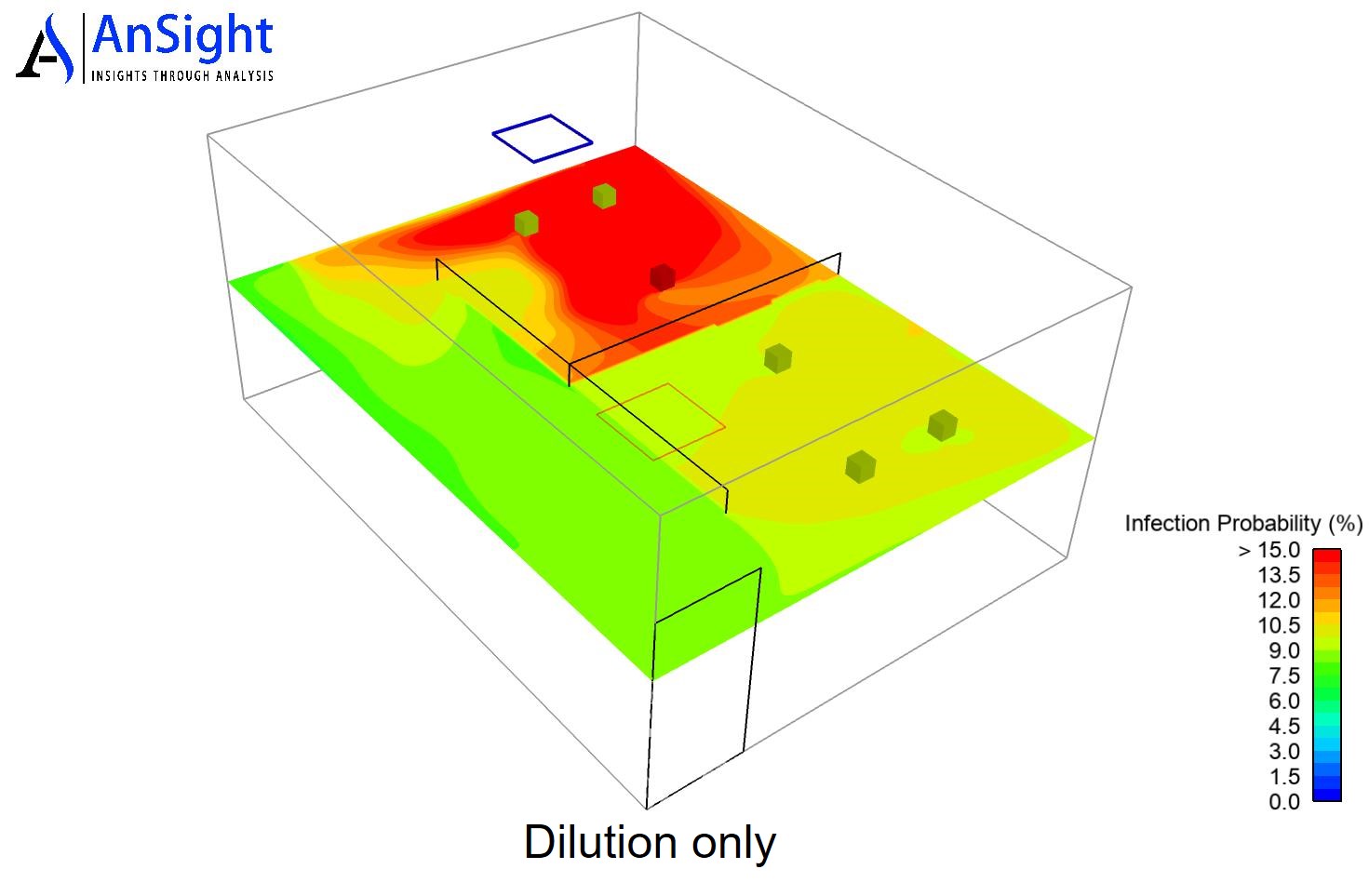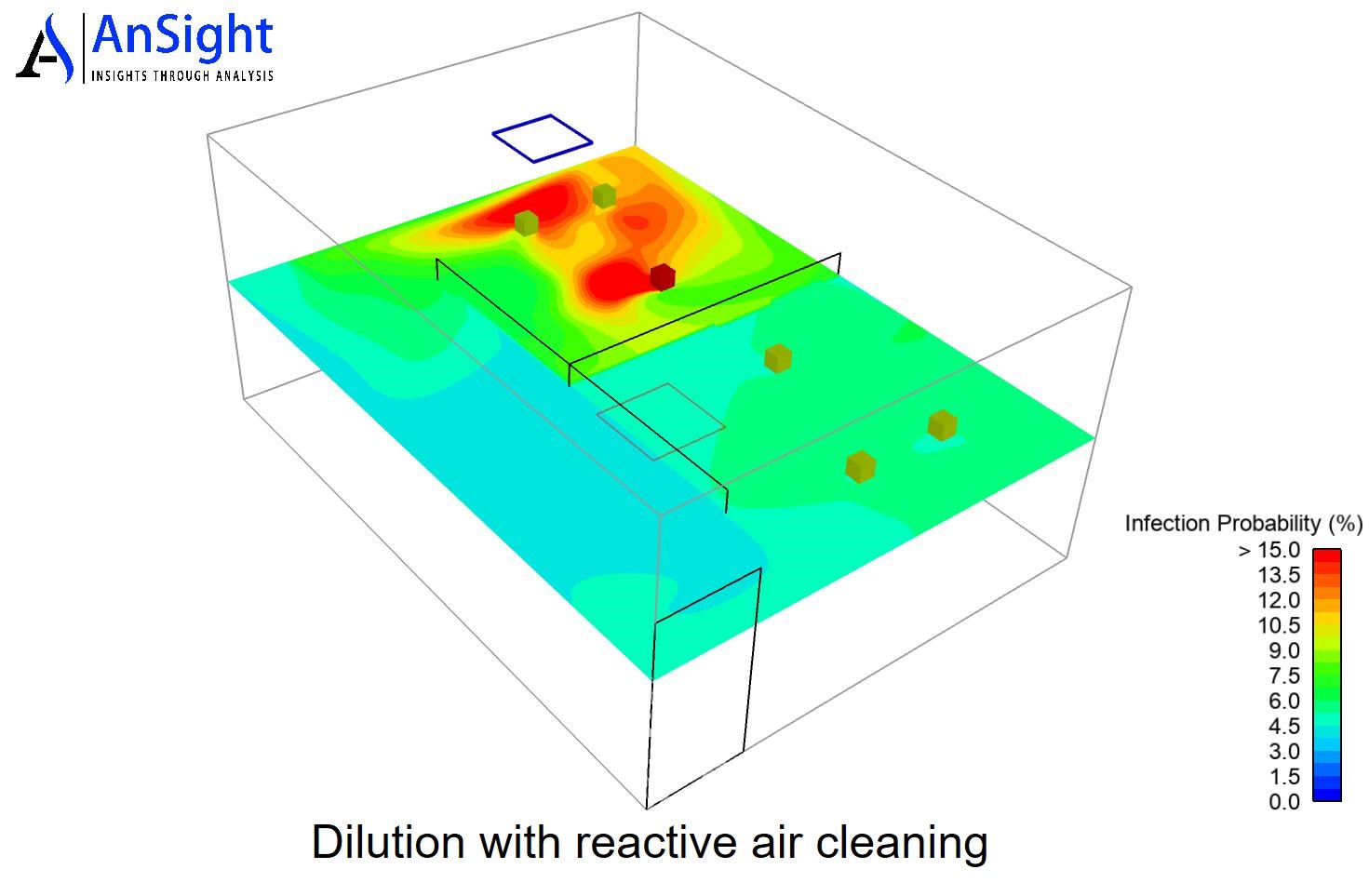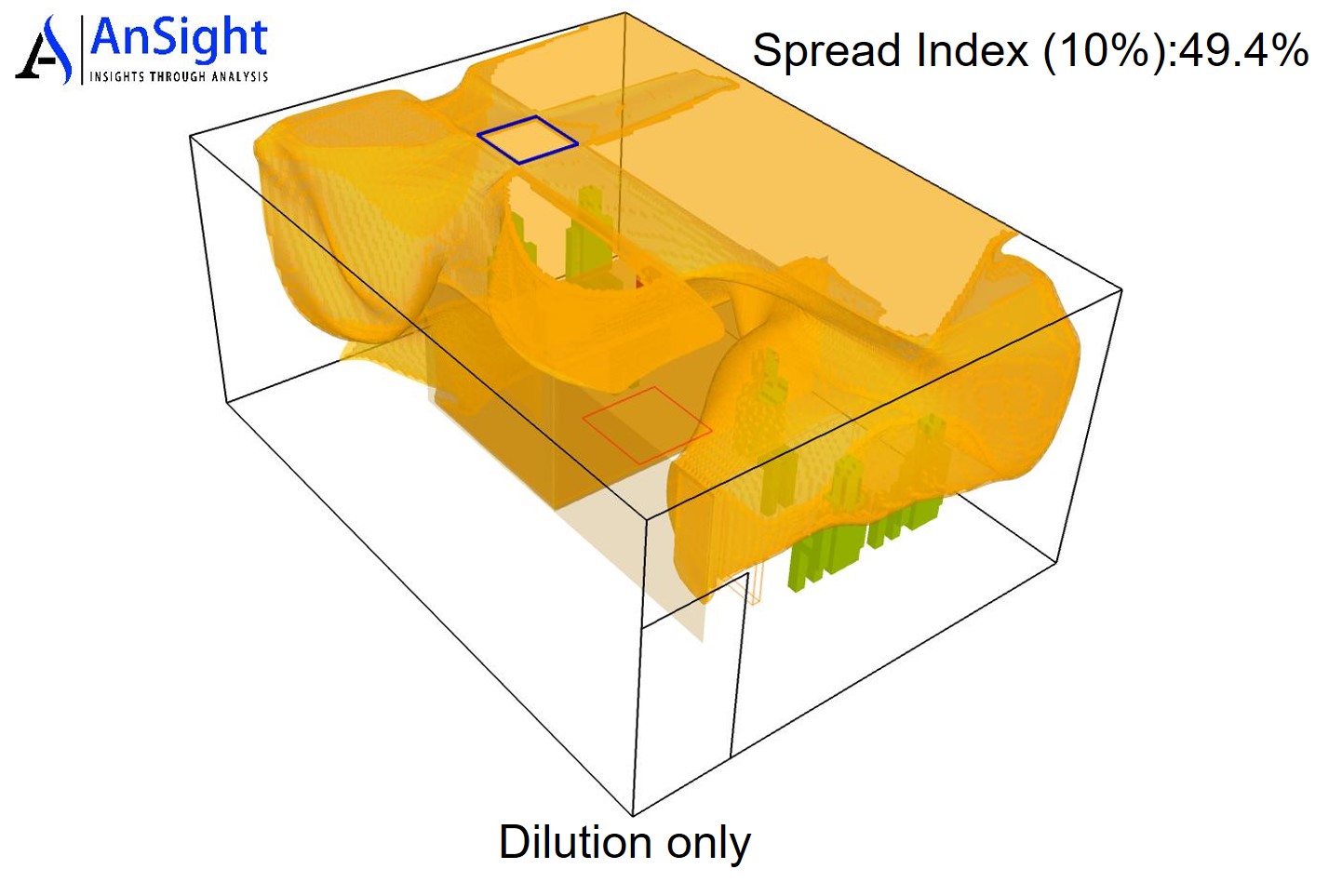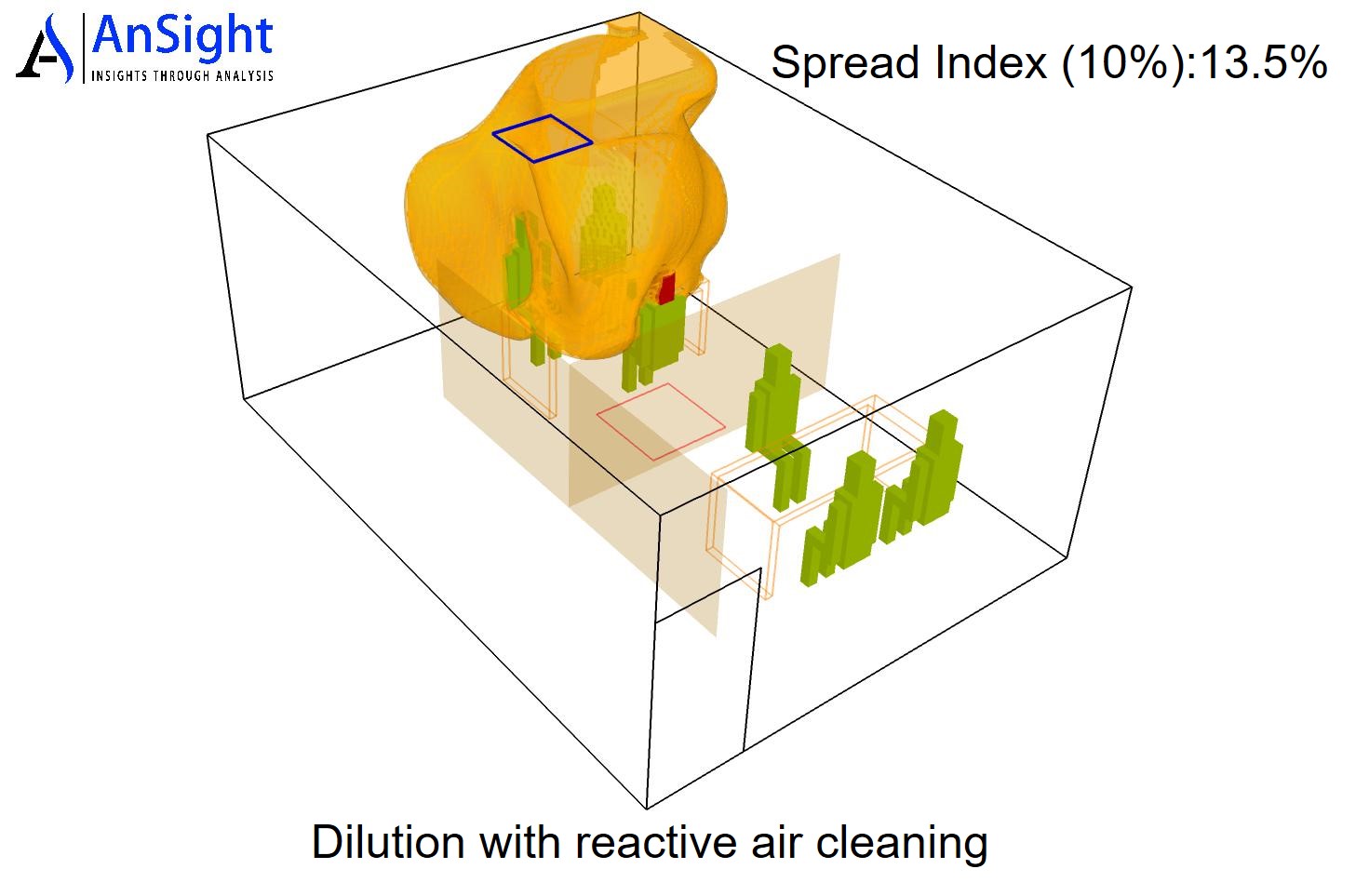CFD Analysis Evaluates Efficacy of Reactive Air Cleaning Technology
What is reactive air cleaning?
Reactive air cleaning involves the release of reactive agents in the room to actively mitigate airborne pathogens and other pollutants. Unlike traditional dilution ventilation in which the concentration of the airborne pathogens in the room is reduced by the clean supply air, the reactive technologies inactivate the pathogens by certain reactive mechanisms, and thus, can help reduce the population of airborne pathogens in the space.
Why CFD Analysis?
During the current COVID-19 pandemic, several air-cleaning technologies have emerged with a plethora of marketing literature claiming high success in inactivating airborne pathogens. Currently, there is no universal standard to test these air-cleaning devices which can provide impartial guidance to consumers. Our Computational Fluid Dynamics (CFD) analyses can analyze the efficacy of these reactive air cleaning technologies in real-life scenarios by predicting the impact of these technologies in the reduction of the probability of infection.
Several factors can affect the performance of reactive air cleaning technology including the life and concentration of reactive agents as well as the effective kill rate of pathogens. These parameters, once determined by controlled laboratory experiments, can be incorporated into the CFD analysis. The release mechanism of the reactive agents along with the room airflow pattern can play a crucial role in determining the efficacy of these technologies. The reactive agents can be released either with the supply air stream through the supply diffusers or a dedicated unit similar to the room air cleaners.
However, the room airflow patterns determine the effective distribution of the reactive agents into the space which can affect their life and kill rate. Several factors such as the location and number of supply and return grilles in a room, type of supply diffusers, size and location of furniture, and various heat sources in the room can affect the airflow patterns. Physical testing of all these parameters in a real-life scenario is time-consuming, resource intensive, and sometimes impossible. There are no reliable techniques other than CFD for the comprehensive visualization and analysis of three-dimensional room airflow patterns.
Pyure Photohydrolytic Hydroxyl Oxidation (PHO) Technology
The Pyure Company employs PHO technology in their reactive air cleaning products in which the hydroxyl (OH) radicals generated from the water vapor using UV energy rapidly react with the Volatile Organic Compounds (VOCs) to form more stable organic peroxy radicals ROO. ROO radicals are distributed into the air stream and inactivate the infectious aerosols in the air as well as on the surfaces.
AnSight LLC using CFD analysis helped in determining the efficacy of PHO technology in a typical office environment. CFD analyses indicate that the organic oxidants (ROO) when introduced into the supply air stream can reduce the average probability of infection at the breathing plane of occupants by about 38 percent and the zone of the probability of infection (Spread Index SI10) by 73 percent with an equivalent ACH of 6. These analyses further indicate that the addition of organic oxidants can reduce the required dilution ACH by 33 percent.
The efficacy of the reactive air cleaning technologies primarily depends on the life span of the circulating reactive agents and their effective kill rates. Once these parameters are determined with controlled experiments, CFD can help not only in determining the efficacy of the air cleaning technology but also in optimizing HVAC layout and strategic locations for the introduction of such reactants to reduce the probability of infection in indoor spaces.


Figure 1: Impact of organic oxidants (ROO) on the reduction of infection probability at the breathing zone at 4.5 feet (1.4 m). It shows 38 percent reduction in the probability of infection.


Figure 2: Impact of organic oxidants (ROO) on the spread of probability of infection. The Spread Index SI10 indicating the extent of the space volume at or above the 10 percent infection probability which shows 73 percent reduction.

